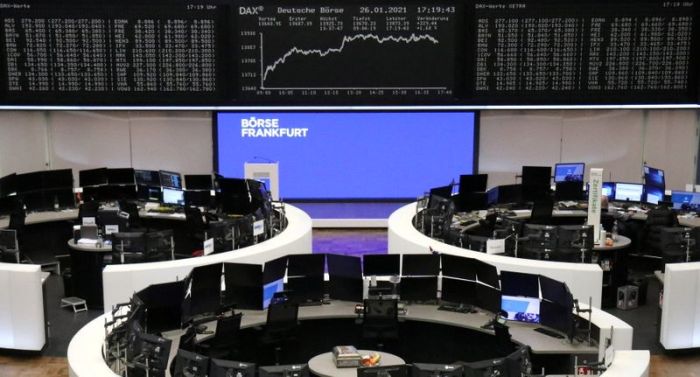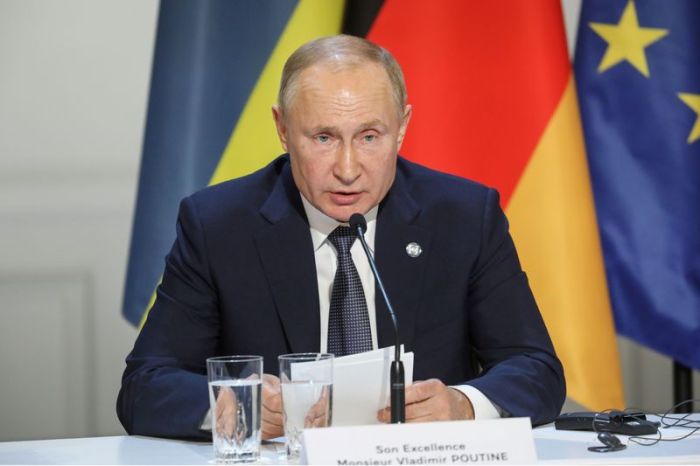BERLIN/PARIS (Reuters) – Growth in Germany and Spain and a smaller-than-expected contraction in France pointed to resilience in the euro zone economy in the final three months of last year, but the bright spot belies a more troubled outlook for the bloc.
In Germany, robust exports helped Europe’s largest economy eke out 0.1% growth in the fourth quarter, staving off contraction despite a second wave of the new coronavirus slamming the brakes on consumption, data showed on Friday.
France, the euro zone’s second-largest economy, shrank 1.3% in the final three months of 2020 after the country entered a second coronavirus lockdown in October to contain a second wave of infections.
Spain achieved timid quarterly growth of 0.4%. But that has not stopped Spain from recording its worst-ever annual economic contraction, with output falling 11% from 2019’s level, official data showed.
“Numbers for Germany, France and Spain showed that GDP was relatively resilient in Q4,” Nicola Nobile at Oxford Economics wrote in a research note. But he added, “there are not many indications that this dynamic could have continued in Q1.”
“All in all, the disappointing vaccine roll-out so far, the extension of restrictions in many European countries and the latest data now point to continued weakness in the eurozone over the coming months.”
The French slump, which followed an 18.5% rebound in the third quarter after a first lockdown, beat expectations for a 4% contraction on average in a Reuters poll of 28 economists, surpassing even the highest estimate of -1.4%.
But France is on tenterhooks to find out in the coming days whether the government will put the country under a new lockdown and in particular whether schools will be closed.
In Germany, Chancellor Angela Merkel and state leaders agreed last week to extend a lockdown until mid-February as the country, once a role model for fighting the pandemic, struggles with a second wave and record daily numbers of COVID-19 deaths.
On Wednesday, German government slashed its growth forecast to 3% this year, a sharp revision from last autumn’s estimate of 4.4%, caused by a second coronavirus lockdown.
TRAILING U.S.
The economic outlook across the 19-country euro zone is being muddied by a row between the European Union and Anglo-Swedish firm AstraZeneca over its supply of vaccines to the bloc, and by the return of inflation in Germany.
The International Monetary Fund said this week the euro area is likely to slip behind the United States in its recovery.
“Recovery paths vary within the group, with the U.S. and Japan projected to regain end-2019 activity levels in the second half of 2021, while in the euro area and the United Kingdom activity is expected to remain below end-2019 levels into 2022,” the IMF said in its in its World Economic Outlook.
The AstraZeneca supply issue is a blow to Europe’s COVID-19 vaccination drive, and the German inflation spike – consumer prices turned positive and rose in January to 1.6% on the year – adds to a complex mix of data for the European Central Bank to assess.
ECB data released on Friday showed lending to euro zone companies picked up last month though the bloc was probably back in recession and banks said they were tightening access to credit amid fear of defaults amid a fresh wave of lockdowns.
The ECB is unlikely to cut its already-record-low policy because that would do little to revive the pandemic-hit euro zone economy, five sources told Reuters, playing down concern about a strong euro.
Traders were left scratching their head this week when Dutch central bank governor Klaas Knot said the ECB “had room” to push its Deposit Facility Rate, currently at minus 0.5%, further below zero if needed to stem a rally in the euro EUR=.
The sources said Knot had raised the rate cut issue at the ECB’s policy meeting last week but the discussion was “marginal” and not considered part of the ECB’s policy strategy, which is now focussed on bond purchases and cheap loans to banks.
“ECB communication could be such a powerful tool but is really very confusing,” BofA analysts said in a research note.
(Additional reporting by Belén Carreño and Joao Manuel Vicente Mauricio in Madrid and by Francesco Canepa, Balazs Koranyi and Frank Siebelt in Frankfurt; editing by Larry King)



















